- Home
- Machining techniques
- CNC Machining Services
- Cooperative supply services
- Designs
- Materials
- Finishing Services
- Shop
- Products
- Guide
- About Us
- Contact Us
2021.2.7
In this article, we’ll focus on the common types of 3D printers, each of these machines uses different 3D printing technology. Follow us to understand the types of 3D printing and how they are classified.
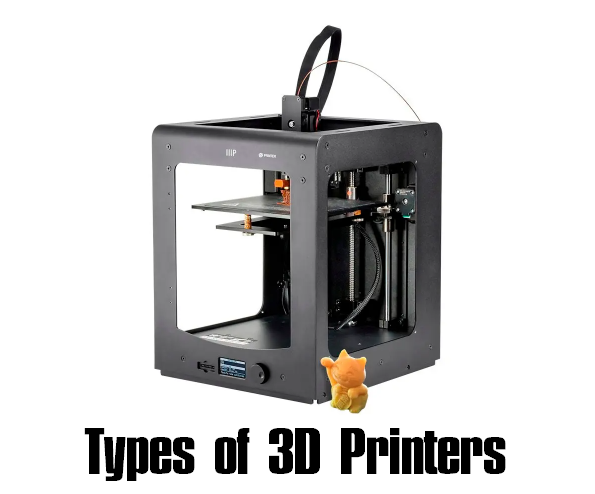
When it comes to the 3D printer styles or machine categories, it’s better to talk about the types of technologies. 3D printing machines with different technology set them apart from other kinds. The popular types of 3D printing include SLA, FDM, SLS, LOM, EBM and so on. Here we discuss 8 common types of 3D printers (printing).
1. Stereolithography (SLA)
SLA (Stereolithography) is the first 3D printing technology in the world. SLA 3D printers use a laser with a specific wavelength and intensity to focus on the surface of the light-cured material, so that it solidifies from point to line and from line to surface in order to complete the drawing operation of one layer, and then the lifting table moves the height of one layer in the vertical direction, and then solidifies another layer. In this way, layers of superposition form a three-dimensional object. Machines with this technology produce prototypes and parts by converting liquid photopolymers into solid objects. SLA technology is mainly used for manufacturing a variety of molds, models, etc.; it can also add other ingredients in raw materials, SLA uses prototype mold instead of wax mold in investment casting. SLA printers have fast forming speed and high precision, but they will inevitably produce stress or deformation due to shrinkage during resin curing. SLA resin 3D printers have become the popular choice for a wide range of industries, such as dentistry, jewelry, model making, education, medical, aerospace, entertainment, from engineering and product design to manufacturing.
2. Fused deposition Modeling (FDM)
FDM (Fused deposition modeling), the material used in FDM technology is generally thermoplastic materials, such as ABS, PC, nylon, etc., which are fed in filaments. The material is heated and melted in the nozzle. The nozzle moves along the cross-section and filling track of the part, extrudes the melted material, and the material solidifies rapidly and binds with the surrounding material. Each layer is stacked on the upper layer, and the upper layer plays the role of positioning and supporting the current layer. With the increase of the height, the area and shape of the layer profile will change. When the shape changes greatly, the upper layer profile can not provide sufficient positioning and support for the current layer. Therefore, it is necessary to design some auxiliary structure to provide positioning and support for the subsequent layers, so as to ensure the realization of the forming process. This process does not need laser, it is easy to use and maintain, and the cost is low. ABS prototypes are widely used in product design, testing and evaluation because of their high strength. With FDM printers, you can not only print prototypes, but also produce end-use products such as plastic gears. In recent years, PC, ABS, PPSF and other high strength forming materials have been developed, which makes it possible to directly manufacture functional parts. Due to some significant advantages of this process, it has developed very rapidly. At present, FDM system has the largest share in the installed rapid prototyping system in the world.
3. Selective Laser Sintering (SLS)
SLS (Selective Laser Sintering) was first proposed by Carl Deckard of the University of Texas at Austin in 1989. SLS 3D printing uses powder as material. This kind of powder can only melt under the high temperature of laser irradiation. The powder spraying device first lays a layer of powder material, preheat the material to near the melting point, and then uses laser irradiation to scan the cross-section shape of the required model, so that the powder melts and the sintered parts are bonded together. Through this process, the powder is accumulated layer by layer until it is finally formed. The bed lowers incrementally with each successive laser scan. The process repeats one layer at a time until it reaches the height of the part. Laser sintering is a 3D printing technology with the most complex forming principle, the highest forming conditions and the highest cost of equipment and materials, but it is also the technology that has the most far-reaching impact on the development of 3D printing technology. At present, the materials of SLS technology can be nylon, wax, ceramics, metal, etc. SLS technology is ideal for prototypes, fully-functional, and end-use parts. SLS is similar to SLA technology in speed and quality, but different in materials.
4. Laminated Object Manufacturing (LOM)
LOM (Laminated Object Manufacturing) uses sheet materials (such as paper, plastic film, or composite materials) as raw materials. According to the cross-sectional profile data extracted by computer, the laser cutting system uses laser to cut the inner and outer profile of the workpiece from the paper with hot melt adhesive on the back. After cutting a layer, the feeding mechanism superimposes a new layer of paper, uses the hot pressing device to glue the cut layers together, and then cuts them. In this way, they cut and glue layer by layer, and finally become 3D workpieces. Commonly used materials in LOM are paper, metal foil, plastic film, ceramic film, etc. this method can not only manufacture mold, model, but also directly manufacture components or functional parts. The advantages of this technology are high reliability, good support, low cost and high efficiency. The disadvantages are that the pre-treatment and post-treatment are time-consuming and laborious, and the hollow structural parts can not be manufactured.
5. Electronic Beam Melting (EBM)
EBM (Electronic Beam Melting) is a 3D printing style similar to SLM, applies a powder bed fusion technique, SLM uses high-power laser in a chamber of inert gas, while EBM uses a powerful electron beam in a vacuum. Machines with EBM often use to print 3D metal parts, to achieve complex geometries with high freedom of design. EBM extracts the electrons from a tungsten filament under vacuum and projects them in an accelerated way on the layer of metallic powder deposited on the building plate of the 3D printer. These electrons will then selectively fuse the powder and thus produce the part.
6. Digital Light Processing(DLP)
DLP (Digital Light Processing) is a type of vat polymerization, DLP 3D printing makes use of a liquid photopolymer resin which is able to cure under a light source. The only big difference between DLP and SLA is the light source used to cure the resin. With a DLP 3D printer, the light source is a specially developed digital light projector screen, which makes DLP generally faster than SLA, it takes less time to cure a single layer.
7. Selective Laser Melting (SLM)
SLM (Selective Laser Melting) is a 3D printing technique that utilizes high power density laser to melt and fuse metallic powders to produce near-net-shape parts. Thin layers of metallic powders on the build platform are melted by the thermal energy induced by one or several laser beams. In each layer, the cross-section area is built by selectively melting and re-solidifying metallic powders. Supports used in SLM in order to reinforce small angles and hangovers of the parts, also to stick the design to the job tray. SLM is recommended for who have the requirements to produce metal parts for prototyping and production quickly.
8. Continuous Liquid Interface Production (CLIP)
CLIP 3D printing applies photopolymerization to create smooth-sided solid objects of a wide variety of shapes using resins. This technology can improve the speed of 3D printing dozens or even hundreds of times. In short, the light-cured resin is very sticky, and the viscosity is further improved in the curing process, so it is easy to adhere. Therefore, it takes time to wait and process the adhesive part when printing each layer. While CLIP uses special materials, so that there is a layer of gas (oxygen) between the cured resin and the bottom, which will not adhere to the bottom, so it can be continuously cured, greatly improving the speed.
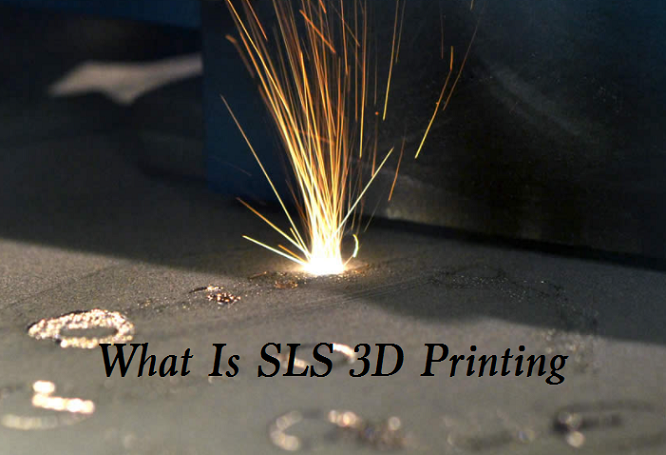 What Is SLS 3D Printing & How Does It Work | Difference Between SLS and SLM
What Is SLS 3D Printing & How Does It Work | Difference Between SLS and SLM
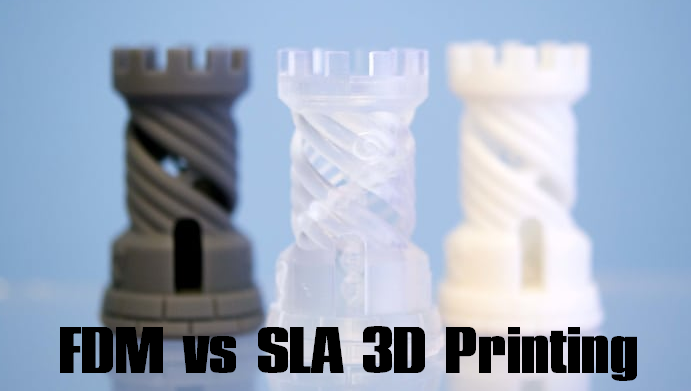 Filament vs Resin 3D Printer – Difference Between FDM and SLA 3D Printing | CNCLATHING
Filament vs Resin 3D Printer – Difference Between FDM and SLA 3D Printing | CNCLATHING
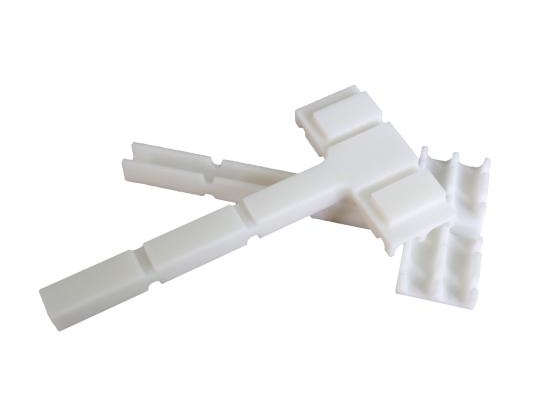 SLS Nylon Vs MJF Nylon For 3D Printing – What’s The Difference Between SLS & MJF Nylon
SLS Nylon Vs MJF Nylon For 3D Printing – What’s The Difference Between SLS & MJF Nylon
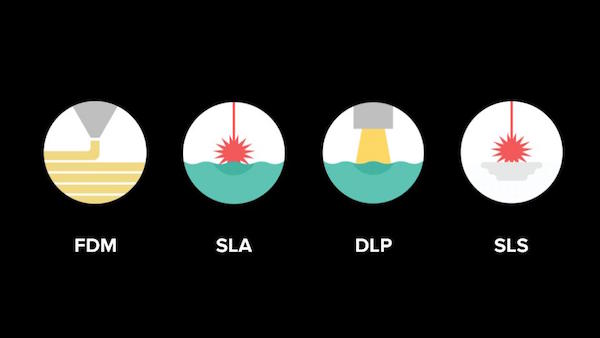 3D Printer Comparison Guide – What Are Differences Among FDM, DLP & SLA And When To Use Them
3D Printer Comparison Guide – What Are Differences Among FDM, DLP & SLA And When To Use Them
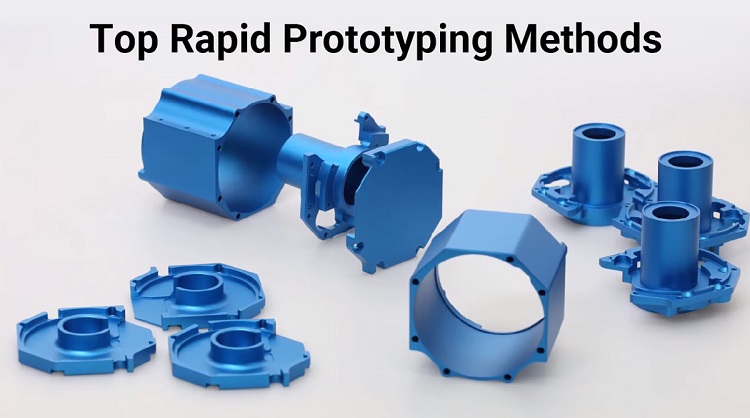 6 Top Rapid Prototyping Methods – CNC, Vacuum Casting, SLA, SLM & More | CNCLATHING
6 Top Rapid Prototyping Methods – CNC, Vacuum Casting, SLA, SLM & More | CNCLATHING
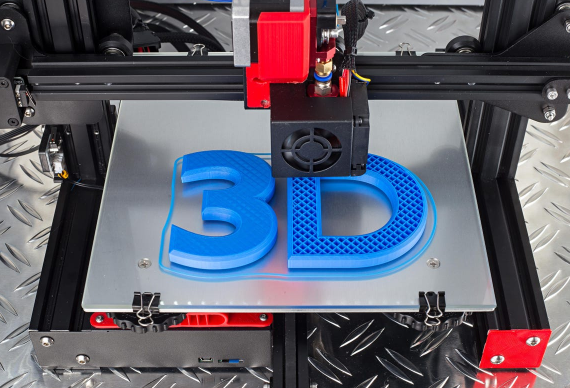 5 Common Types Of 3D Printing Technologies | CNCLATHING
5 Common Types Of 3D Printing Technologies | CNCLATHING
